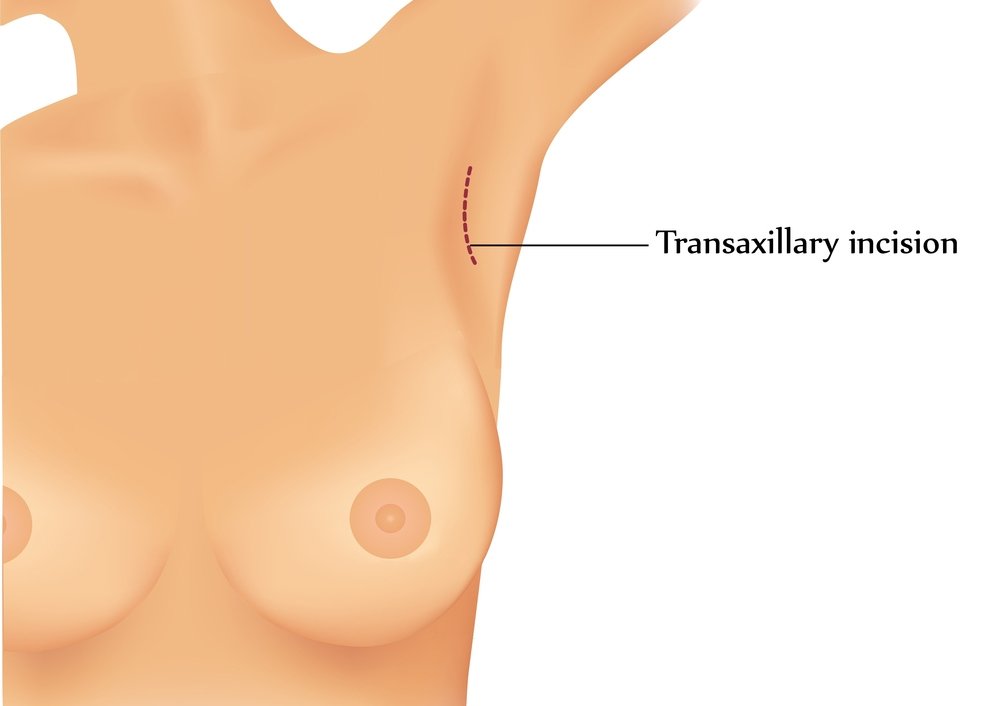Breast Reduction Miami
Breast reduction in Miami is a sophisticated cosmetic procedure that reduces your breasts’ size and makes them more proportioned with your body. Surgeons also perform this procedure to relieve discomfort with overly large breasts.
Breast reduction, also known as reduction mammoplasty, is a reliable option for women with large, saggy, less contoured, and less proportioned breasts. Today’s article will give you detailed information on breast reduction in Miami. Read on!
takes 2 min
Book a Free Consultation
What is Breast Reduction
Breast reduction is a surgery that requires the surgeon to remove excess fatty tissues and skin from your upper body or chest. The procedure is ideal for women with large and out-of-proportion breasts. It can also relieve neck pain, back pain, and other complications caused by large breasts.
Research shows that most women have higher satisfaction rates with breast reduction surgery. Men with gynecomastia, a condition characterized by enlarged breasts, can also undergo this surgery. It is crucial to know the benefits, risks, recovery time, and potential complications of breast reduction surgery.

Planning your surgery
Planning breast reduction surgery is an integral part of the overall process. Before the procedure, you will consult your surgeon and discuss your medical history. Your health provider will also examine your body.
The purpose is to ensure whether you are a suitable candidate for breast reduction surgery. For instance, your surgeon will determine whether you had a lump removed from the chest or have any other health conditions that affect your chest or upper body.
Experts recommend discussing everything with your surgeon before deciding to undergo surgery. You can discuss your physical health conditions and the mental issues you have experienced regarding your breasts. Your health provider will take pictures of your breasts, measure their size, and discuss the procedure.
The surgeon will also give you comprehensive instructions to prepare for the surgery and streamline the recovery process. Sometimes, the surgeon performs a mammogram or breast exam before surgery.
Moreover, your surgeon will ask you about your lifestyle, habits, exercise, physical activity, smoking, alcohol consumption, and medications. It is crucial to quit smoking at least four weeks before the procedure to ensure proper healing. Avoid taking aspirin, blood thinners, and anti-inflammatory drugs like Aleve or Motrin.
Breast reduction surgery cost in Miami
According to the American Society of Plastic Surgeons, breast reduction surgery costs between $5,000 and $7,000. The overall price depends on various factors, such as medical tests, breast exams, anesthesia, pre-surgery tools/supplies, post-surgery care, medication, and surgeon’s skills.
Types of breast reduction
Anchor or Inverted-T, lollipop, and donut are three common breast reduction surgery techniques. A board-certified surgeon will evaluate your breasts and discuss all the requirements before choosing a specific technique. Let us now discuss these three types of breast reduction methods.
Anchor or Inverted-T
Anchor or Inverted-T breast reduction surgery requires the surgeon to make vertical and horizontal incisions underneath your breasts. The second incision usually follows the crease of your breast.
In addition, this breast reduction technique allows the surgeon to remove excess fatty tissues and achieve more extensive reshaping and contour. We recommend undergoing surgery with an Anchor or T-inverted method if you have saggy breasts. The only downside of this method is that it requires a more extended downtime.
Lollipop
When surgeons choose the lollipop technique, they will make a vertical incision to remove mild to moderate amounts of fatty tissues. The lollipop technique is ideal for women who do not want to remove a large amount of fat content. It is perfect for women with noticeable sagging looking to reshape or lift their breasts’ tissues.
In addition, the lollipop breast reduction technique enables the surgeon to remove fatty tissues and epithelial tissues, resulting in narrower, lifted, and reconstructed breasts. At the same time, your nipple and areola have much better positioning and a natural-looking appearance.
Donut
A donut breast reduction surgery requires the surgeon to remove a small amount of fatty tissues and skin. The purpose of this technique is to reposition your breasts and improve their shape, giving you a more youthful appearance.
Check our Discounts
The Benefits of Surgery
There are numerous benefits of breast reduction surgery for women. For instance, you can achieve smaller, more proportioned, well-contoured, well-shaped, and sexy breasts. The procedure allows women to reconstruct their breasts’ tissues and eliminate sagginess caused by aging, pregnancy, and breastfeeding.
Research shows that enlarged breasts can cause severe discomfort and pain in your neck, back, and shoulders. Large and saggy breasts are more prone to rashes, pimples, itchiness, and irritation.
It can also cause headaches, tingling, and numbness in your upper extremities. So, the reduction surgery shifts your breasts’ tissues upward and reduces their weight, improving the overall size, shape, and contours. At the same time, it improves your overall posture and decreases pressure from the bra straps on your shoulders. In a nutshell, breast reduction surgery can:
- Relieve chronic neck, shoulder, and back pain
- Improve your posture and boost your self-confidence
- Reduce skin irritation, itchiness, chafing, and redness
- Enable you to participate in physical activity and exercise
- Sleep properly and shop for bras, garments, and clothes of your choice
What are the risks?
Although breast reduction surgery offers a wide range of benefits, it has a few downsides. You must understand the risks before undergoing surgery to make an informed decision. Here are a few risks associated with this surgery.
Pain
The surgeon will give you anesthesia to prevent discomfort and pain during the procedure. However, you will still experience soreness, inflammation, and pain during the first three to five days.
Your surgeon will prescribe you pain medications to relieve discomfort. You can also place wrapped ice packs over sore areas to reduce inflammation, swelling, bruising, and pain.
Hematoma
Hematoma after breast reduction is a rare complication following the surgery. A hematoma is one of the leading causes of fat necrosis if you leave it untreated. It can also cause skin sloughing and nipple loss. You can prevent a hematoma by avoiding shoulder movements for three days following the surgery.
Research shows that postoperative hematoma occurs in up to 8% of women. Following your health provider’s instructions is the best way to avoid the risk of a hematoma. The more you take care of your breasts, the lower the chances of hematoma incidences.
Infection
Many research studies have confirmed that breast reduction surgery has lower infection rates, ranging between 1.1% and 2.1%. However, when you fail to take care of the wound, neglect your health providers’ guidelines, and avoid hygienic measures, you will experience infections:
Common signs of postoperative infections are swelling, redness, warmth, and pain. You may also experience red streaks leading from the treated area, high fever, and pus draining from the incision site.
Fat necrosis
Fat necrosis is another rare complication of breast reduction surgery. Increased inflammation in your breast area prevents oxygenated blood from reaching fatty tissues. Consequently, the fatty tissues in your breast die.
It can also cause changes in your skin and lead to the formation of oil cysts and the occurrence of lumps. Although these changes are not cancerous, they can cause the death of your fatty tissues. Therefore, we recommend consulting your health provider immediately to seek treatment and overcome the issue.
Scars
Breast reduction scars are usually around the nipples. You may also have a scar with a vertical appearance running down your breasts and a horizontal one across your breasts’ crease.
You may have single or multiple scars depending on the surgery technique your surgeon has chosen. Scars will appear red for the first five to six weeks. Most will fade over time and remain invisible under your bra, bikini top, and clothes.
Nipples
During the breast reduction surgery, the surgeon removes fatty tissues, glandular tissues, and skin tissues from the lower region of your breasts. Next, the surgeon moves the nipple upward and closes the tissues to form smaller breasts. The procedure can lead to loss of sensation in your nipples and areolae.
Breastfeeding
The surgeon removes the glandular tissues during the procedure and cuts the milk ducts and nerves to move the nipple. These changes significantly impact your breasts’ ability to produce milk. However, when you choose a board-certified surgeon, you can reduce the risk of cutting through the nerves and milk ducts.
Meet Your Plastic Surgeon
Dr. Mario Reyes MD
Dr. Ernesto Torres
Dr. Richard Lung
What to do Next?
Do you have large and disproportioned breasts? Do you want to eliminate sagginess and make your breasts more contoured, firmer, healthier, and smaller? If yes, you can rely on the expertise and years of experience of our board-certified plastic surgeon in Miami. Call us between 9:00 AM to 5:00 PM Monday to Friday for more information on breast reduction surgery.
Frequently Asked Questions
Are there financing options for a Breast reduction?
Some companies in Miami offer financing options for breast reduction through reputable organizations like CareCredit and Healthcare Lending. Contact us today to discuss the financing options and make the surgery a reality and your dream come true.
What can I expect during Breast reduction recovery?
You will experience soreness, swelling, pain, and inflammation for two weeks. You may also feel a stretching or pulling sensation in your upper body. You can reduce the pain by taking medications and avoid the risk of infections by taking the prescribed antibiotics.
What can I expect after the operation?
After the breast reduction surgery, you will feel weak and numbed. You will also experience pain, soreness, and bruising in the chest area. Remember, complications occur when you fail to follow your doctor’s instructions.
Breast reduction weight requirements
If you are overweight, you are not an ideal candidate for breast reduction surgery. However, if you are a few pounds above the ideal weight, you can undergo this procedure and reduce the size and shape of your breasts.
Contact Us
Monday - Friday: 9:00 AM - 6:00 PM



